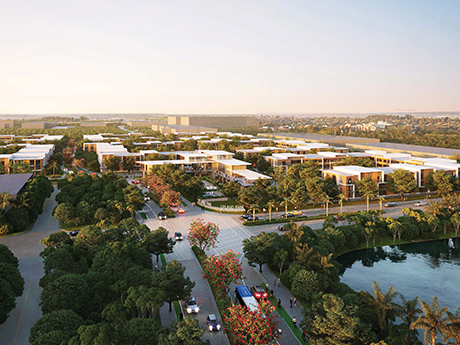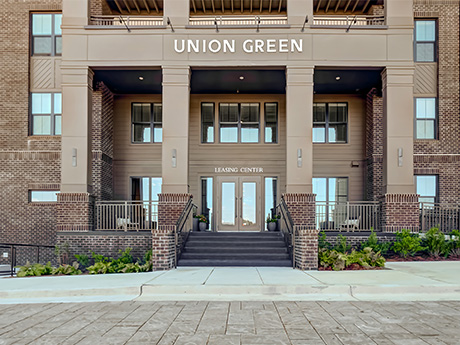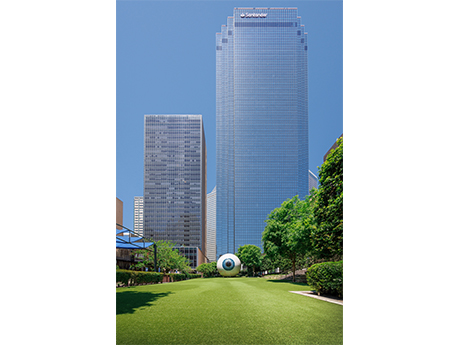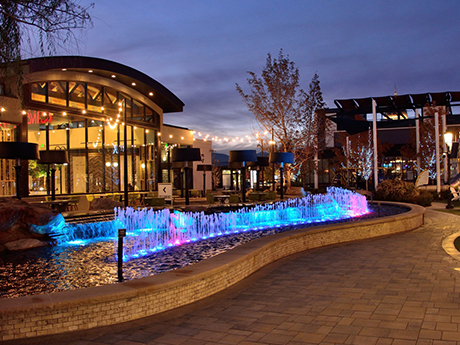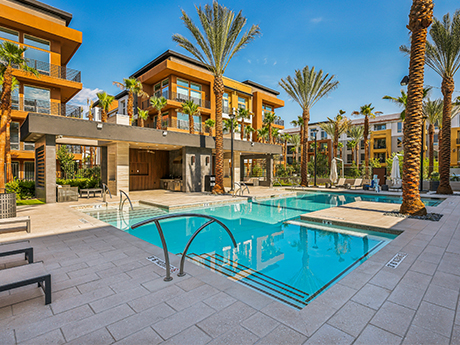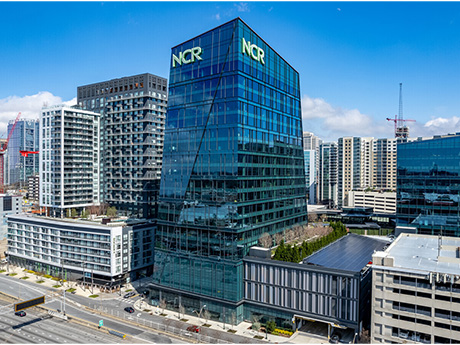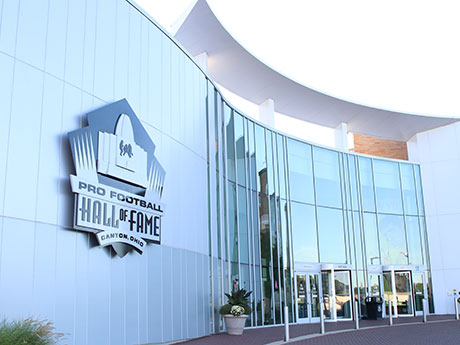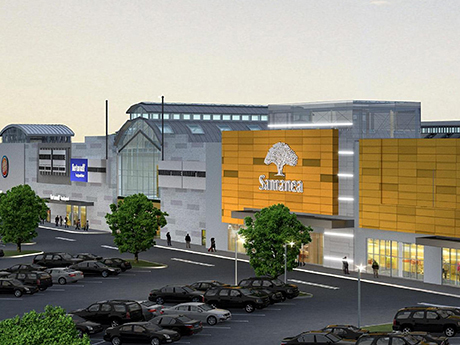— By Charles Van Geel of Cushman & Wakefield — Despite broader economic headwinds, Southern Nevada’s commercial real estate market continues to showcase remarkable resilience – especially in the office sector. The demand for high-quality office space remains strong in the Southwest and Summerlin submarkets, underpinned by a flight to quality and shifting corporate priorities toward top-tier environments. The bulk of today’s office activity is concentrated along the critical Interstate 215 corridor, stretching from Green Valley to Summerlin parkways. This corridor has become the heartbeat of the region’s office market. However, within this high-demand stretch, the availability of true Class A product (particularly in the Southwest submarket) is diminishing. Small blocks of space are becoming increasingly rare, while sublease opportunities along this corridor are practically nonexistent. Adding pressure to this is the fact that new construction is largely stalled. Speculative development is not economically feasible with the current market dynamics. Lenders are unwilling to fund projects unless developers can demonstrate significant preleasing commitments, often north of 50 percent. This has been a challenge, as preleasing activity in the broader market remains minimal. Still, the area has received a few recent high-profile deliveries. These include Downtown Summerlin’s 1700 Pavilion, Phase II of …
Market Reports
South Florida remains one of the most attractive markets for multifamily investment in the United States, driven by population growth, job creation and limited rental supply. While 2024 saw slower transaction volumes, fundamentals suggest a rebound is coming in 2025. This article explores trends in investment sales, debt capital markets and joint venture (JV) equity, highlighting how strategic structuring and strong relationships are driving activity in today’s selective capital environment. Poised for sales growth Miami’s multifamily market continues to thrive, fueled by population growth, high rental demand and major developments. The city’s job market, with an unemployment rate of just 2.4 percent, is expected to grow by over 18,000 positions in 2025. Corporate expansions — like Citadel, MSC Group, Nvidia, Microsoft and Shopify — have driven demand for luxury rentals, while vacancy rates remain under 5 percent. With home prices rising over 70 percent in the past five years and mortgage rates more than doubling, homeownership is out of reach for many. As a result, demand for luxury rentals remains strong, especially in suburban areas where transit-oriented developments are emerging. One standout is Terra’s $1 billion Upland Park in West Miami-Dade County. In partnership with the county, the project includes …
— By Jerry Doty of Colliers — While several other Western markets started to slow down in late 2022 or early 2023, the Southern Nevada industrial market seemed to be relatively unscathed going into 2024. However, the impact was finally felt early in the first quarter of 2024. It lasted through the remainder of the year. Despite this noticeable decline in activity, most remained optimistic that it would be a quick slump. We were hoping 2025 would come out with guns blazing. These prognostications have so far proven to be incorrect. First-quarter 2025 felt very much like the past four quarters. This noticeable slowdown could not have come at a worse time. We are in the midst of a record wave of new completions that will continue to deliver through the third quarter. The Las Vegas industrial market delivered a little less than 16 million square feet of new inventory in 2024, bringing the total market up to 180 million square feet. The Valley is composed of eight different industrial submarkets, with the North being both the largest in total size (75 million square feet) and the largest amount of product under construction (almost 3.6 million square feet). At the …
Five years after the world shut down, the national multifamily market is still on a roller coaster ride. After the highs of 2021 quickly turned into the lows of 2023, the dust settled in 2024. Today, the market has begun to reactivate while continuing to grapple with the aftereffects of the run-up. While national multifamily transactions soared 22 percent in 2024, Atlanta transaction volume was flat year-over-year as the investment community shifted a favorable view of Atlanta toward ambivalence. Perceptions surrounding new supply and non-paying tenants contributed to the city falling out of vogue with some investors, but Atlanta is a resilient market. With new deliveries having peaked in 2024 and property-level fundamentals rapidly turning the corner, Atlanta may be beaten up, but the light at the end of the tunnel is coming into focus: Atlanta is still a long-term winner. Days of peak supply are over While Atlanta experienced a record 24,000 units delivered in 2024, that figure represents just 4 percent of its total inventory. When compared to other Sun Belt markets like Charlotte (10 percent of total inventory delivered in 2024), Nashville (8 percent) and Dallas (5 percent), the number doesn’t seem as jarring. Looking ahead to …
By Nate Wilkins, associate at Munsch Hardt Kopf & Harr PC Office conversions represent one of the hottest real estate plays in the country, and Texas is undoubtedly a hotspot for those projects. According to D Magazine, in Dallas and Houston combined, there is more than 10 million square feet of vacant office space that is currently being transformed or is slated for conversion. A majority of these projects are mixed-use, meaning that office tenants will eventually be occupying the same building as residential tenants. Therefore, there are several key factors that office tenants and their landlords must consider when signing or renewing leases in the conversion projects, including utilization of common areas, use of utilities and parking allotments. What follows are some strategies for navigating office conversions as they become more prevalent in Texas over the next several years. Common Areas In a typical mixed-use property in which retail space is on the ground floor with multifamily above, landlords are prone to include lease language that states “Tenant shall have no right to use the elevator lobbies, apartment floors and any other areas designated by landlord exclusively for residential occupants.” While standard, this language becomes troublesome when the only …
By Wick Zimmerman, CEO of Outside the Lines Inc. In the Northeast’s evolving commercial real estate landscape, mall owners and operators are navigating now-familiar headwinds: changing consumer behaviors, declining legacy retail brands and the sustained presence of e-commerce . Yet amid these pressures, a reinvention is underway. Malls are shedding their images as static retail venues and transforming into immersive, tech-enabled destinations — and it’s not traditional retail driving the charge. It’s Gen Z, a digitally native, experience-driven cohort that’s redefining what mall real estate can and should be. This shift presents both a challenge and an opportunity for regional retail stakeholders. The challenge? Retrofitting aging assets to meet evolving demands. The opportunity? Creating diversified, high-traffic destinations that outperform their square footages in terms of both revenue and relevance. From Shopping Centers to Engagement Anchors Once emblematic of suburban retail, malls across the Northeast — from Long Island to greater Boston — are increasingly being reimagined as hybridized spaces that combine shopping, entertainment and community programming. In densely populated, high-barrier markets, where new development is constrained, adaptive reuse initiatives are driving the charge. Class B and C malls, in particular, are being repositioned with new anchors — not department stores, but …
— By Adam Schmitt of CBRE — The Las Vegas multifamily market is experiencing a significant transformation that’s shaped by new construction trends and evolving market dynamics. As the city continues to expand and adapt, it is essential for current investors, developers and capital allocators to understand the opportunities and barriers for growth. The multifamily market has seen substantial fluctuations since the onset of COVID-19. Rents surged by 24.6 percent in 2021, buoyed by government interventions. However, as these supports diminished, vacancy rates rose sharply, climbing from an average of 3.4 percent in 2021 to 7.35 percent in 2023. Recent trends, however, indicate a recovery. Vacancy rates have decreased to 6.5 percent as of February, which hint that multifamily fundamentals may be regaining stability and moving toward normalized averages. The single-family housing market is another critical element influencing the overall health of Las Vegas’ economy. The market produced 160,092 single-family homes between 2003 and 2008. However, only 142,455 were built between 2009 and 2024. This slowdown has led to soaring home prices, even amid rising mortgage rates approaching 7 percent. Consequently, the growing disparity between renting and owning has created favorable conditions for rental housing demand, further solidifying the multifamily …
Tenants are battling it out for Atlanta’s top-tier office space as trophy availability tightens and new office construction draws to a halt. With no end to the flight-to-quality trend in sight, Class B assets accounted for a whopping 70 percent of the market’s overall negative absorption (-736,682 square feet total net) in the first quarter of 2025, while Trophy assets recorded positive absorption (+114,579 square feet). Furthermore, office buildings that delivered between 2016 and 2021, which amount to almost 14 million square feet of space, currently average 92 percent occupancy. This underscores the growing divide between the haves and have-nots in Atlanta’s office market. Premium space in demand As office leasing activity reaches its highest level since 2019, decision-makers face a rapidly evolving landscape where securing the right space requires a highly motivated and strategic approach. With rising attendance mandates, workforce expansion and a limited supply of premium office space, competition for the best locations is intensifying. In Atlanta, submarkets like Midtown and Central Perimeter continue to outperform. Mini submarkets surrounding mixed-use districts like Avalon and The Battery (i.e. “urban-edge” in the suburbs) are also in high demand among tenants craving walkability and upscale amenities in the metro’s most sought-after …
By Ethan Elser, PACE Equity In today’s turbulent commercial real estate landscape, developers and property owners face challenges to secure sufficient competitively priced capital. High interest rates, compressed valuations and a low leverage lending environment have complicated funding strategies and eroded traditional capital stack assumptions. More and more, property owners and developers are turning to Commercial Property Assessed Clean Energy (C-PACE) financing due to its core attributes: low cost, nonrecourse, long-term and fixed-rate capital. With amortization periods of up to 30 years, owners and developers recognize that C-PACE terms are virtually unmatched in the private debt markets. As an assessment tied to the property rather than the borrower, C-PACE funding is being leveraged more than ever to support creative solutions in today’s marketplace. C-PACE has evolved into a dynamic financial tool used across the lifecycle of a building — from new construction to recapitalizations to retrofits. C-PACE is used by savvy commercial real estate professionals to optimize their capital structure and boost their internal rate of return (IRR). Identifying the financial utility of C-PACE in a shifting market C-PACE is growing in popularity as an alternative to mezzanine debt, preferred equity and other high-cost financing. In today’s environment, C-PACE is …
By Taylor Williams The retail markets throughout the greater New York City area have been starving for more quality space in the post-pandemic era, with ground-up supply gains rarely hitting the market outside of obligatory inclusions within apartment buildings and highly curated clusters at mixed-use developments. According to JLL’s latest market report on New York City, as of the first quarter of 2025, there were approximately 200 availabilities across Manhattan’s “prime” retail submarkets — a record low. Average asking rents leapt 7.4 percent between the fourth quarter of 2024 and the ensuing period, settling at a rate of $577 per square foot. The report identified traditionally ritzy retail corridors and hotspots such as Fifth Avenue, Madison Avenue, SoHo and Times Square as recipients of the “prime” label, also designating the Williamsburg district in Brooklyn as one such area. So when well-located spaces formerly occupied by retailers that are now defunct or aggressively downsizing become available, they tend to draw major, immediate interest. “Expanding retailers have substantial opportunities to backfill big box and junior spaces vacated by bankrupt chains,” says Mitzi Flexer, managing director in the New York City office of national brokerage firm Bradford Allen. Flexer says that a notable …


